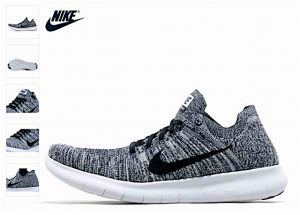Friend: “Sweet Nike Flyknits.”
Me: “Thanks – they’re insanely comfortable”.
Friend: “You know they are made out of recyclable material right?”
Me: “Wait, what?”
It seems like jus the other day that I was reading articles on social media linking Nike to a number sweatshop scandals regarding inhumane factory conditions for their workers. In “Just Fix It: How Nike Learned To Embrace Sustainability”, Abnett makes clear that these scandals went as far as 1998. Yet, Nike was just declared “the most sustainable apparel and footwear company in North America for environmental and social performance, including its labour record”. It is important to note here that Nike was not actually given a choice – continued scandals would eventually lead to the demise of the organization.
I went home and immediately did some research about the Flyknit brand. Nike claims to have been able to reduce its waste by about 60% when compared to traditional productions of similar shoes – this indicates a reduction of about 3.5 million pounds of waste. By 2016, the company was able to transition all of the yarn that was initially used to create the shoe to recycled polyester. There are two insights that I have grained from this experience:
- The price of these Flyknits were definitely higher than traditional running shoes that I have historically purchased. With this in mind, I was happy to pay that additional cost because it was actually a better product – it both looked good and felt incredibly comfortable. The key here was that a customer was willing to pay a higher price for a product not just because it was more sustainable, but rather because it was a genuinely superior product.
- Companies that genuinely integrate sustainability in significant ways come out on top. Nike began reevaluating its purchasing practices and incentivizing designers to design with sustainability at the core. Abnett claims, these sustainability initiatives “unlocked in the company a huge insight, which was [that] solving a sustainability problem can actually unlock new performance, new price or new aesthetic benefits”. In this case, choosing to be more sustainable was not a step the company needed to take for the sake of doing so, but rather was a step in developing a revolutionary product.
The case to actually avoid integrating sustainability at the heart of a business’ core operations and values seem to be getting smaller and smaller. To other businesses I ask – if Nike can do it, why can’t you?
Links:
- https://www.businessoffashion.com/articles/people/just-fix-it-hannah-jones-nike
- http://www.ecouterre.com/nike-celebrates-four-years-of-flyknit-now-uses-recycled-polyester/

aaronlattimer
March 20, 2017 — 5:22 pm
Now, I am a bit of a sneaker-head so pardon my love for this article. I believe this is commendable act by one of the largest shoe brands in the world. Having the “Fix it” attitude is something very integral for large corporations to not only tackle, but to perform extremely well. Nevertheless, I question your final questions … If Nike can do it, why can’t you? While Nike has attempted to fix their persona and brand identity, their excess financial capital allows them to explore new tools and practices where other companies lack. This is where I reply, “If Nike does it, can they educate it?”
daweiw
April 10, 2017 — 12:45 pm
I’ve always been a big fan of Nike’s product design and creativity (I think Tinker Hatfield is one of the dopest human beings alive), but not their sustainability and manufacturing processes. Finally, a product that soothes my internal conflict! Now, I wouldn’t call myself a sneaker head by any means, but when the all-black Flyknit Racers came out, it was like I found a shoe that was designed specifically for me.
In addition to creating new technology that promotes sustainability, Nike is also part of the Sustainable Apparel Coalition, where Nike, along with some of the world’s largest clothing manufacturers, collaborate to find more ethical and sustainable means of doing what they do. In fact, Nike is already testing a new design for their future shoeboxes, which will be released with their new Flyknit Air Max Royal 01. But, they cannot stop here. Regardless of the materials and processes their shoes go through, the industry must find a way to utilize more ethical means of manufacturing, with a strong emphasis on working conditions.